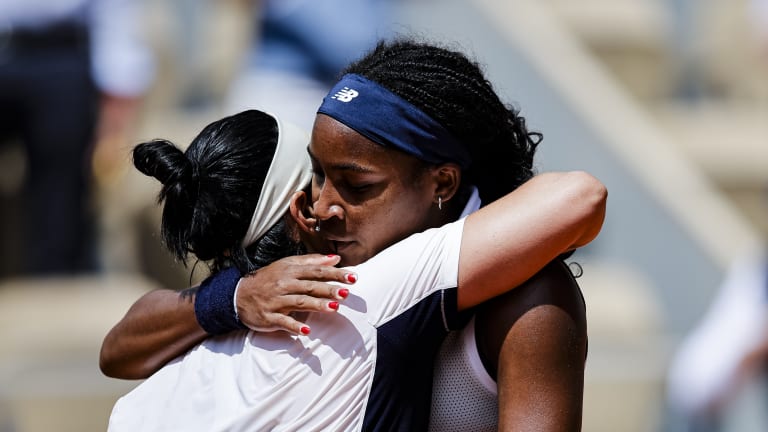CELEBRITY
“She is really playing the absolute limits of the court,” one of the commentators, Chris Bowers said.To win the match, though, Jabeur needed those winners to count for two points each. She also made 38 errors, and many of them seemed to come right after a piece of brilliance. Case in point: With Gauff serving

Coco Gauff and Ons Jabeur deserved better than an 11:00 A.M. start time
The American learned another lesson in patience and aggression in her quarterfinal comeback win.“His winners look like they should count for two points.” That’s what a 1970s-era tennis writer said of Jimmy Connors as he watched the brash basher play a Wimbledon final. It was a compliment, but also a warning: Jimbo’s full-throttle backhands were thrilling, but risky. Perhaps unfortunately, you don’t get any extra credit for style in tennis.
That writer’s phrase came back to me while I was watching Ons Jabeur play Coco Gauff in the quarterfinals at Roland Garros on Tuesday. Jabeur spent the first set and a half, as well as the last couple of games, hitting brilliant shots in all kinds of ways, from all kind of positions. Crosscourt drops that landed an inch from the net. Leaping forehands smacked into the far corner. Lob volleys that touched down just inside the baseline. Gauff likes to run, but she probably didn’t enjoy traveling from baseline to net and back again this many times in an afternoon. Jabeur hit 30 winners, and forced Gauff into 30 missed shots.
“She is really playing the absolute limits of the court,” one of the commentators, Chris Bowers said.To win the match, though, Jabeur needed those winners to count for two points each. She also made 38 errors, and many of them seemed to come right after a piece of brilliance. Case in point: With Gauff serving at 5-3 in the third set, Jabeur saved a match point by hitting not one, but two perfect drop shots in a single rally. Then, at deuce, feeling confident from the last point, with her cheering section at full roar,, she added a little extra whip to her slice forehand return…and sent it straight into the net.
Bowers had a different reaction this time: “What was that?”
A minute or so later, after a Jabeur smash sailed wide, Gauff had advanced to the semifinals, a 4-6, 6-2, 6-3 winner.
“It was, like, really couple of moments that I missed, was really frustrating,” Jabeur said.
What was frustrating for Jabeur was another lesson—in patience, aggression, and opportunism—for Gauff. Through the first eight games, the American was out-played. But when she served at 3-5, and fell behind in that game, she didn’t get down on herself and let Jabeur off easily. Gauff kept fighting, saved two set points, and held. It didn’t win her the set, but it prolonged the action, and gave Jabeur more time to cool off.
When Jabeur did cool off, early in the second set, Gauff was ready. Serving at 1-2, Jabeur missed an easy backhand at 40-15. Gauff followed immediately with a backhand winner, an aggressive forehand to earn break point, and another baseline attack to break. She was up 3-1, and wouldn’t trail again.
“I felt like she took the advantage and fly away with the set,” Jabeur said.
“She was playing really well the whole match,” Gauff said. “She was hitting a lot of winners, which is something I’m not used to against anyone. So I was trying to be aggressive.”
Gauff upped her aggression from the forehand side in particular. After hitting just one winner from that wing in the first set, she had seven over the last two. While she couldn’t match Jabeur’s flair, she did force the Tunisian into 38 errors. And when Jabeur made her late run, Gauff leaned on her serve to save a break point in the final game. Those two shots, her serve and forehand, are slowly becoming assets rather than liabilities for her.
“My favorite thing about Coco is her fighting spirit,” Jabeur said. “She always tries to find ways, she’s really smart on the court.”











